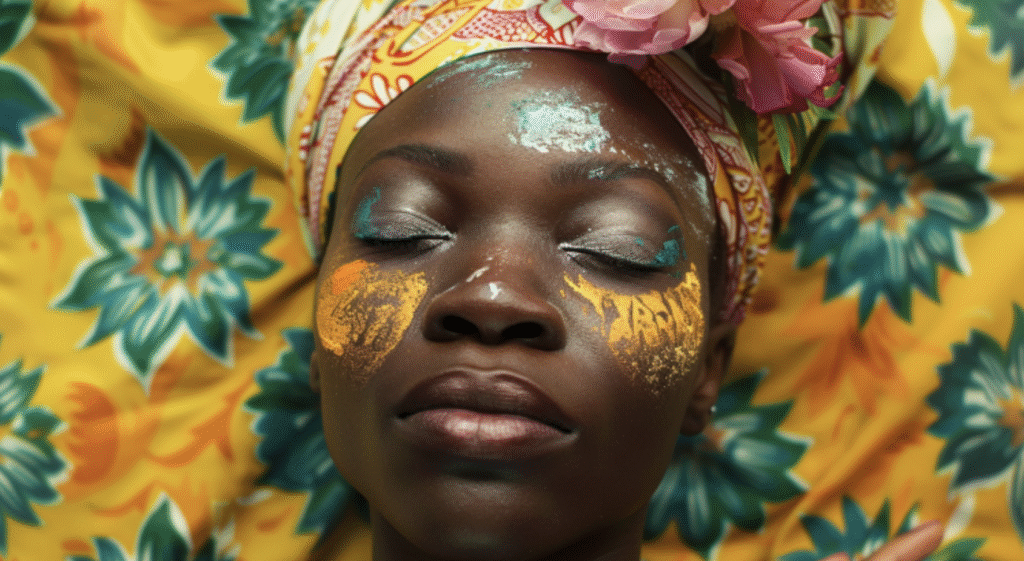
Across the rich landscapes of Africa, beauty was never just about appearance — it was about identity, wellness, spirituality, and community. Long before the rise of modern cosmetics, African women mastered the art of self-care through powerful rituals using nature’s purest ingredients. These traditions, steeped in wisdom and heritage, continue to inspire how we see beauty today.
Bathing as Healing and Renewal
In ancient Africa, bathing was far more than cleansing the body. It was a spiritual practice of purification, healing, and connection. Women bathed in rivers, lakes, and special bathhouses, treating water as a sacred source of renewal.
- In Egypt, perfumed baths were enriched with flower petals and essential oils.
- In West Africa, women used the legendary black soap, crafted from plant ashes and oils, to purify and soften their skin.
- In Ethiopia, herbal steam baths with fragrant leaves opened pores and refreshed the body.
Bathing was also a social event — a moment to gather, share stories, and nurture each other with natural scrubs made from leaves or sponges.
Nature’s Cleansers and Skin Secrets
Without chemical soaps, African women turned to the earth. Black soap, made from plantain peels, cocoa pods, and palm oil, fought acne and dryness gently. Clays — red, white, or mixed with rose water and milk — pulled toxins and restored radiance. These natural cleansers not only cleansed the skin but kept it balanced, glowing, and youthful.
Hair as Heritage and Power
Hair was — and still is — a crown of identity in Africa. Women nourished their hair with shea butter, coconut oil, and castor oil, ensuring strength and shine. Hairstyles told stories: braids signified age, tribe, and social status, with mothers passing down the art to daughters. In North and East Africa, henna was used to color, soften, and strengthen hair, blending beauty with symbolism.
Glowing Skin and the Power of Oils
To maintain soft, radiant skin, African women exfoliated with crushed nuts, sugar, and salt blended with oils. Shea butter was perhaps the greatest beauty treasure, shielding the skin from the sun, healing scars, and restoring suppleness. Aloe vera, widely used in Egypt, cooled and repaired skin, while herbal baths infused with leaves and flowers refreshed body and soul.
Marks of Beauty and Identity
For some tribes, scarification — delicate marks etched into the skin — was more than decoration. It symbolized strength, identity, and belonging, turning the body into a canvas of heritage and pride.
Beauty That Endures
The legacy of ancient African women lives on. Shea butter, black soap, braiding, and herbal rituals remain staples in modern beauty and wellness, proving that traditions rooted in nature are timeless. By looking back, we are reminded that true beauty is harmony — with self, community, and the earth.
At Myskora, we draw inspiration from these ancient practices. Our candles and bukhoor are not just products — they are experiences that echo Africa’s heritage of self-care, mystique, and luxury.
